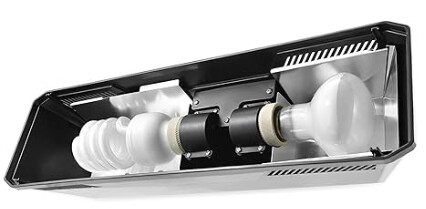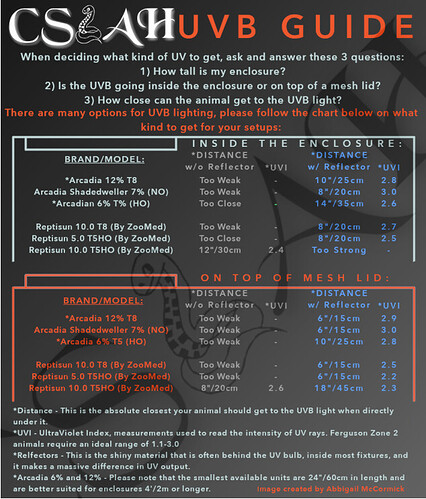It is a coiled UVB btw.
Can you tell us what you mean by “Facing Sideways”?
Like this (I am assuming anyway)-
As for the question, I am going to say yes. Coiled bulbs are not good but if you absolutely must, then that is how it should be set up.
Why is it that coiled bulbs are not good used in a dome setting? And why are the sold then? They have to be good for something?
I mean like this:

How does that change the UVB output though?
It doesn’t. Those bulbs put out inadequate levels of uvb and into a very small area. By having it sideways it just slightly increases the radius that it is spread out.
@caron Coiled bulbs put out much less UVB than they claim they do. And along with that, the area it covers is very small meaning that it can big problems such as MBD or stunted growth. And yes, technically there is a use for them. They will work for animals like leopard geckos and some others. As to why they are sold, money is unfortunately the answer. That is why so many people recommend the tube lights over the compact ones. And after you purchase the light fixture, it is pretty cheap. You just have to replace the bulb every 6 months to a year. If you have YouTube, there are some good videos on why compact uvb isn’t a great option compared to other products
If a beardie is not getting natural sunlight, it doesn’t matter if he’s stunted or not. Without UV he can’t metabolize enough calcium and will get MBD
That’s what the UV light will be for. When you can’t take him outside for UV.
Before this thread gets too far off track, corn snakes do not really need a lot of UVB, and exposure to too much can actually lead to the development of cataracts prematurely. On top of that, if you have a morph that contains Amel, they are more sensitive to damage from UV light.
If you don’t currently have UVB and are adding it, do you already have a fixture?
I was actually meaning the OP, seeing as this thread has gotten quite off track and no one has yet really answered the question. Hence speaking about corn snakes in my reply.
Ok, thank you!
I have a fixture. Would it be better for me to get a 10.0 rather than a 5.0 which I was planning on so it may give off around 2.0 - 5.0 which is good for a corn snake.
Sorry for so many questions, I am planning on getting a corn snake sometime this summer.
Sorry I was in wrong thread….
Yep so right about corns and UVB!
So part of what you’re going to want to do is figure out how much UV your animal is getting. Corns in the wild get something like .7 - 3.0 UVI. Here’s a graphic I found that has some common lamp types and the UVI they give off at a set distance:
If you have a mesh top enclosure, that filters out some of the UV, which is why there are two charts. I’d also suggest only keeping it on for part of the day. Again, if you end up getting a corn snake that is any morph including Amel, you may want to forego UV in the enclosure for their comfort.
Thanks so much for the help!
I would still avoid this. Even with the chart provided, If your corn gets too close to the light the UV can cause problems this goes for the 5.0 as well, but especially when a 10.0 is involved. You can actually cause cataracts of the light is too much.
So try to keep the light the recommended distances in the chart as much as possible or set a timer for short amounts of time so you reduce risks
I’ll also link you to this post by the knowledgeable @t_h_wyman in a UVB thread regarding boas about the use of a smart plug:
Kudos to you, @reptilerealm111. You are doing your research, planning for good care, and getting things dialed in before getting your snake. That’s the ideal way to do things. Please don’t ever apologize for asking questions here. ![]()
You’ve gotten solid advice. Corns don’t really require supplemental UV. Some keepers use it, some don’t. (I don’t. ) If you do use UV, don’t blast it. @noodlehaus, thanks for that handy chart.
There is some logic indicating that UVB *may *be helpful. It’s very necessary for some reptiles species, but it seems there’s a lot of advice floating around extrapolating that what is needed for geckos is needed for corns. This isn’t is true or helpful. Corns don’t eat greens and fruit, for instance.

